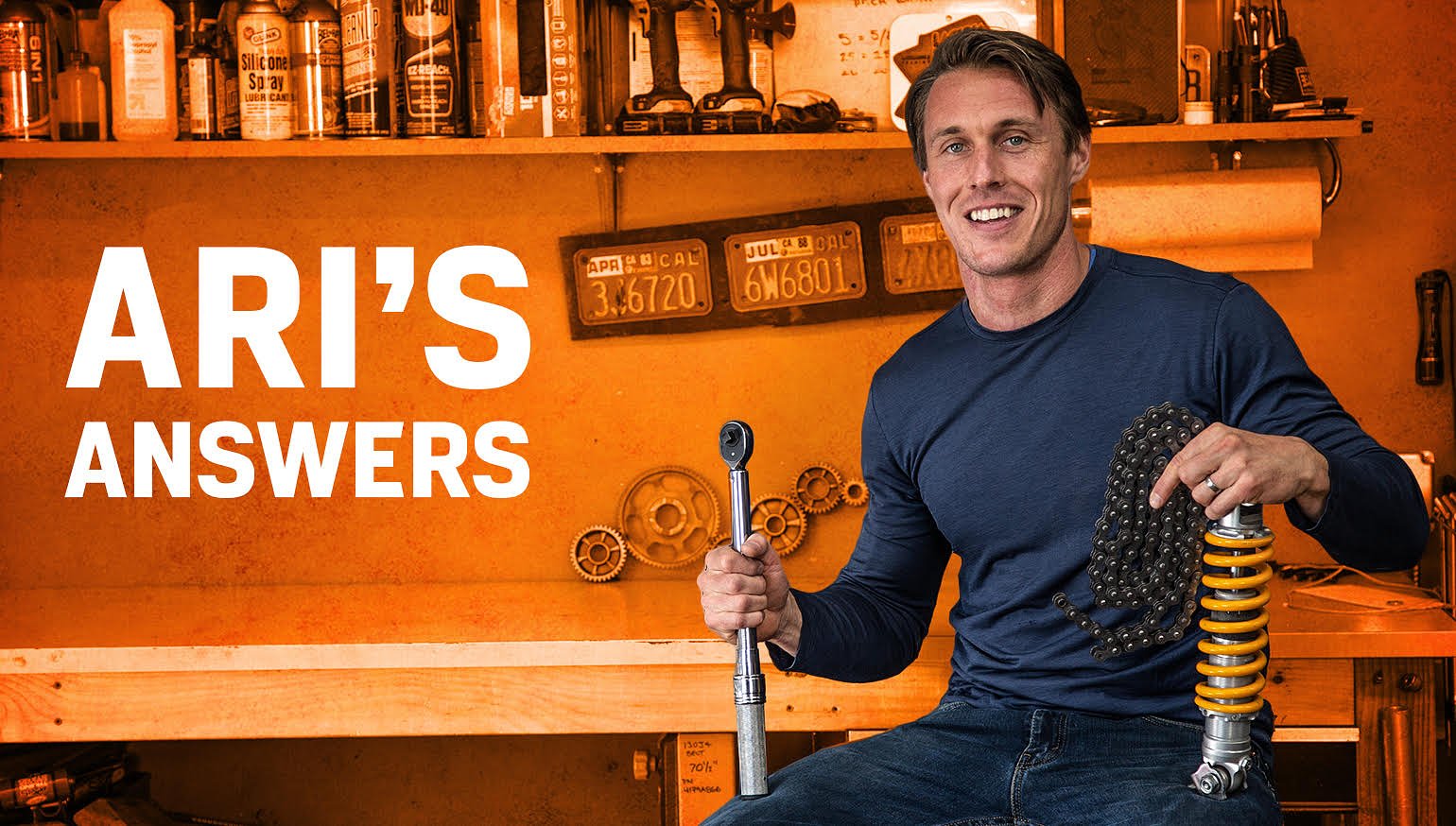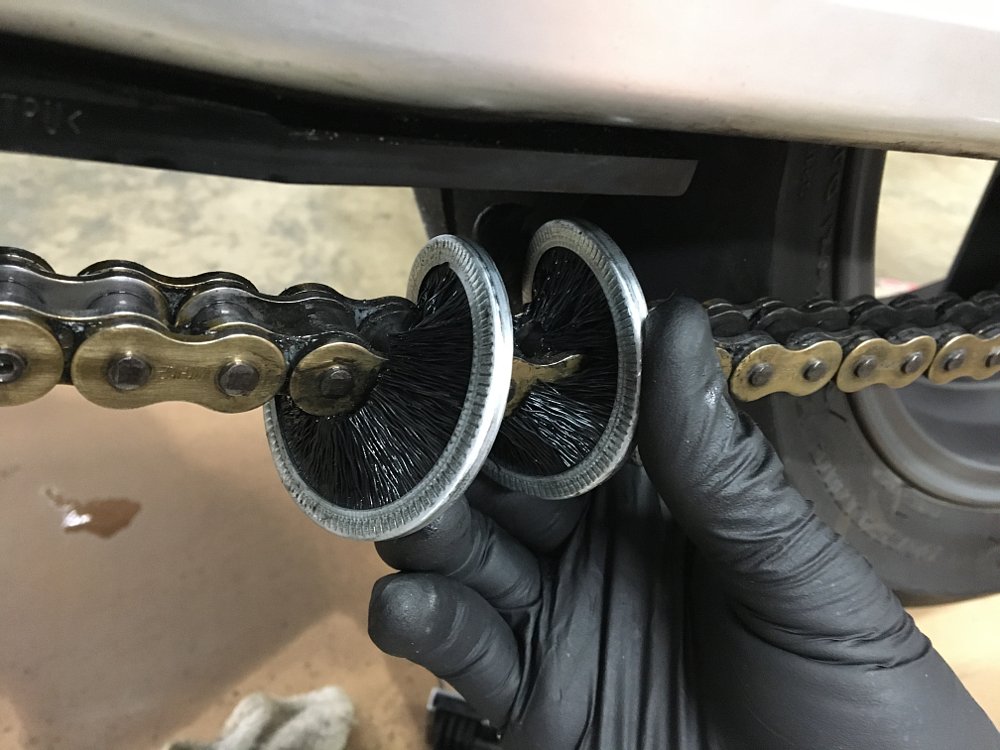This installment of Ari's answers focuses on cam chain tensioners, overheating, and engine braking. Let’s get right to your questions… and the answers.
Editor's note: Ari's Instagram inbox is often full of technical questions and he replies to (almost) all of them. We publish a few of the answers here so others can benefit from the info. Got a question you'd like answered? Leave it in the comments section below or message him on Instagram at @arihenning211.

I’ve been wondering about manual cam chain tensioners vs. the auto tensioners manufacturers put in production bikes. Would you recommend either and why? — @noobkin
All motorcycle engines (well not two-strokes, or rotaries, or electric bikes, obviously) have a cam-chain tensioner, and it does exactly what the name says. Most bikes come with automatic, spring-loaded tensioners that work as they were designed and you never have to think about them. But ACCTs are a mass-produced part with components (springs, ratchets, etc.) that can potentially fail. And that can be catastrophic. Like buy-a-new-bike catastrophic.
The alternative is a manual cam-chain tensioner, which many aftermarket companies offer for a variety of models. A MCCT is a simple device — just a threaded plunger with a locknut — so nothing can really fail, and if set up properly manual tensioners are 100 percent reliable. However, they require initial (and periodic) adjustment, which is actually quite simple, but can be intimidating for those who aren’t mechanically inclined.
I’ve never had trouble with an OEM automatic tensioner, but plenty of people have. You ought to be able to visit an owner’s forum and find out if your bike is one of the few that have had issues, and if they are, then a manual tensioner (or an updated OEM part, if one is available) is a good alternative.
Any recommendations for chain care on long rides? As in SF to LA to Joshua Tree National Park. — @juanphatsun
Chain care, my favorite topic! And my recommendation is to not neglect it. You’ve got a 1,000-mile ride ahead of you (longer if you take more of the fun roads between those POIs, which I’d recommend), and your chain will certainly need some TLC along the way.
I’d recommend giving the drivetrain a full tune-up (deep clean the chain and sprockets with a brush and degreaser, set slack, apply lube) before you depart. Then just wipe the chain down with a rag and apply some lube at the end of each day and you should be good. Motul’s Chain Paste is good for traveling, but In a pinch you can always find an empty quart of oil in a gas station trash can, and there’s usually plenty of oil left in the bottle to lube your chain.
How beneficial are chain oiler systems? Do they make an actual difference on a long 30-50-day trip? — @kishbore.92
I’ve never actually used an auto-oiler — because I don’t mind lubing manually — but the concept is sound. The device applies lube right where it’s needed while you’re riding, so your chain stays slippery and happy. And on a long ride like the one you mention, it seems like it’d be a great accessory to have. The downsides are cost (usually between $100 and $200) and setup time.
My bike is overheating. I’ve checked the radiator and coolant level, and the fan is working. What could be the problem? — @petrol_head_07
Since your bike is liquid-cooled, I’m guessing it’s also fuel-injected, in which case any of the tuning issues I might point to on a carbureted bike would be noticed by your bike’s ECU and announced via a Check Engine Light. That being the case, I would suggest checking the thermostat.
The thermostat plugs into the bike’s cooling system (often on the cylinder) and controls coolant flow through the cylinder jacket to regulate operating temperature. It opens and closes based on coolant temp, but if it’s malfunctioning for some reason (maybe it’s gunked up with debris or it’s actually failed) then it might be stuck closed, which would cause your bike to overheat in a hurry.
You can test the thermostat by removing it (you’ll have to drain your coolant system) and placing it in a pot of boiling water. You should see the valve move away from the seat by a quarter inch in fairly short order. If it doesn’t, it’s malfunctioning and you’ll need to replace it. Luckily, they’re fairly cheap.
Can you talk a bit about engine braking? My manual says I can slow down using engine braking. — @shubham_sangle25
Any time you roll off the gas while the bike is in gear, the engine will slow the rear wheel down. A lot of people think that’s due to compression, but it’s actually due to the vacuum that’s created between the throttle plates and the piston as the piston descends in the cylinder.
Some people also think engine braking is somehow bad for your motor. It’s not. After all, pulling against a vacuum puts a lot less stress on engine parts than being pushed down by an explosion, and since the crank is still turning the oil pump is still circulating lubricant. Engine braking is an effective means of slowing down and is especially useful on long descents, when steady application of your brakes could glaze the pads or even warp a rotor.











